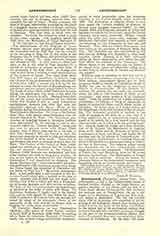

Armenierstad (Hungarian, Szamos-Ujvar, Lat., Armenopolis), a city in the Transylvanian county of Szolnok-Doboka, situated on the upper Szamos, an eastern tributary of the Theiss, and the seat of a Uniat Greek diocese (Armenopolis) that embraces the northern part of Transylvania; the see is suffragan to the Archbishop of Fogaras and Alba Julia, who resides at Blasendorf. The city was founded about 1700 by Armenians who emigrated at the beginning of the fourteenth century from Armenia and settled first on the banks of the Krim and Moldau.
In the second half of the seventeenth century they moved to Transylvania, and after a two years’ struggle on the part of the Armenian-Catholic Bishop Auxentius Verzereskul, they were converted from Eutychianism to Catholicism. By the Bull “Ad Apostolicam Sedem” (November 26, 1853), the city became a diocese. The first bishop was Johann Alexi (1854-65); he was succeeded by Johann Vancsa (1855-68), Pavel (1872-79), and Johann Szabo, appointed in 1879 (b. August 16, 1836). The diocese of Armenierstadt contains about 683,300 inhabitants; 432,900 Catholics of the Greek-Roumanian Rite, 41,100 of the Latin Rite, and 1,600 of the Armenian Rite. It has one cathedral, six canonicates, four titular abbeys, one formal provostship, forty-five deaneries, 490 mother-churches, 391 dependent churches (Filialkirchen), one monastery with four monks (Basilian Order, in Bikszad), 475 pastors, 25 chaplains, one regular priest, eleven other ecclesiastics, and 64 clerics. The bishop directs a diocesan academy with seven professors, one teachers’ training college, with four professors, one Armenian-Catholic Ober-Gymnasium, and about 600 public schools, with 38,900 pupils. The cathedral and the episcopal residence, architecturally speaking, are insignificant, a far more imposing building being the principal Armenian-Catholic church, built in 1792.
JOSEPH LINE

